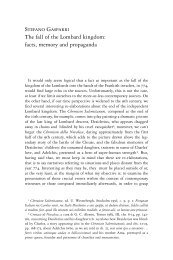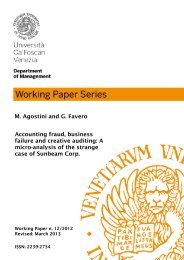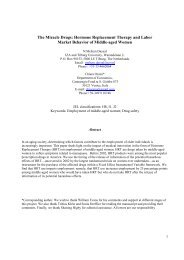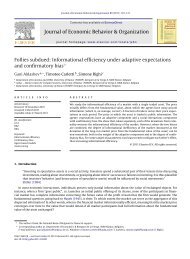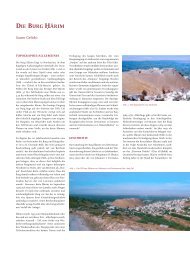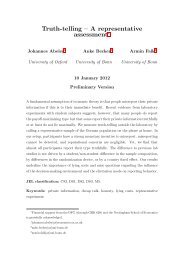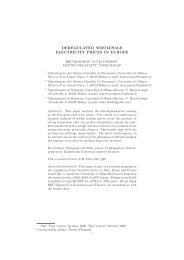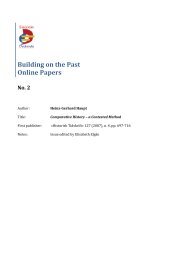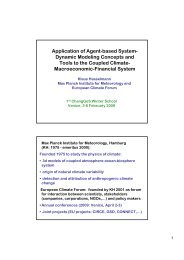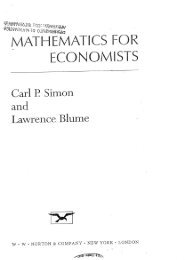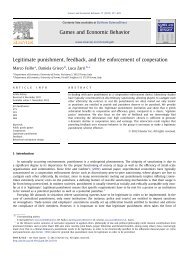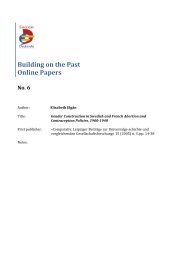The pilot area of Auronzo di Cadore (Belluno) - Università Ca
The pilot area of Auronzo di Cadore (Belluno) - Università Ca
The pilot area of Auronzo di Cadore (Belluno) - Università Ca
Create successful ePaper yourself
Turn your PDF publications into a flip-book with our unique Google optimized e-Paper software.
Box 2<br />
SNA in brief<br />
3 / Phase 1 / Actors’ Analysis<br />
Social network analysis (SNA) focuses on relationships among social<br />
entities, and on the patterns and implications <strong>of</strong> social relationships.<br />
It entails a representation <strong>of</strong> social environment in terms <strong>of</strong> patterns<br />
and regularities in relationships amongst interacting units (Wasserman<br />
& Faust, 1999; Scott, 2000).<br />
Main outputs / <strong>The</strong>re are three main outputs from the SNA phase,<br />
which will be an input into the preparatory phase for the Creative System<br />
Modelling (CSM) exercise. / A list <strong>of</strong> key stakeholders/experts to be<br />
involved in the next phases <strong>of</strong> NetSyMoD. This will limit the number <strong>of</strong><br />
participants to a manageable size, and ensure that no important actors<br />
are left out <strong>of</strong> the exercise. / <strong>The</strong> analysis <strong>of</strong> power will highlight potentially<br />
problematic actors and relations, whom the facilitator will need<br />
to actively manage during the creative system modelling workshop. / A<br />
conflict analysis on the basis <strong>of</strong> position and roles <strong>of</strong> actors within the<br />
network, with the purpose <strong>of</strong> identifying key alleys and/or opponents,<br />
and actors who are opinion setters.<br />
SNA unfolds in five phases: participants’ preliminary identification, interviews<br />
with a sample <strong>of</strong> stakeholders, successive characterisation <strong>of</strong> their<br />
social network, identification <strong>of</strong> initial scenarios and criteria for their evaluation,<br />
and actors’ final selection for the workshops.<br />
3.1 / Participants’ identification<br />
After a couple <strong>of</strong> preliminary visits to the field, the destination was charaterised<br />
in terms <strong>of</strong> categories and main activities, that should have a stake<br />
in the workshop in an attempt to represent all interests.<br />
Given the very nature <strong>of</strong> the participatory process, designed to promote<br />
everyone’s contribution, the number <strong>of</strong> attendances was narrowed to 20<br />
on the basis <strong>of</strong> the organisers’ previous experiences in similar environment.<br />
In ad<strong>di</strong>tion, the organisers sought to include also a small sample <strong>of</strong><br />
participants that live outside the Municipality – but who could nevertheless<br />
contribute to the debate because <strong>of</strong> their expertise in the matter under <strong>di</strong>scussion.<br />
Table 1 below illustrates the five main categories and the 20 subcategories<br />
identified as potentially relevant participants <strong>of</strong> the workshop.<br />
Given the competitiveness and <strong>di</strong>fferent developments <strong>of</strong> the two main<br />
20




